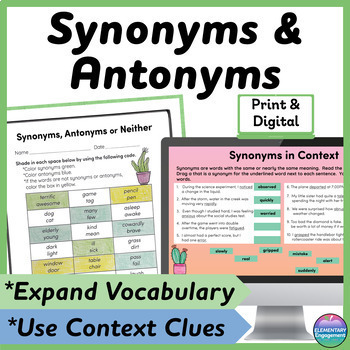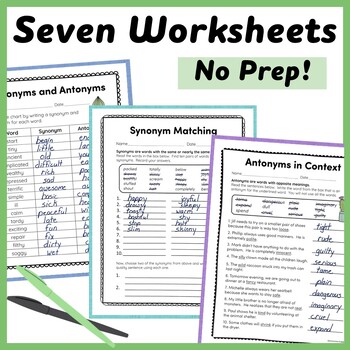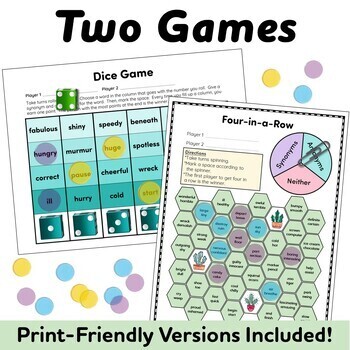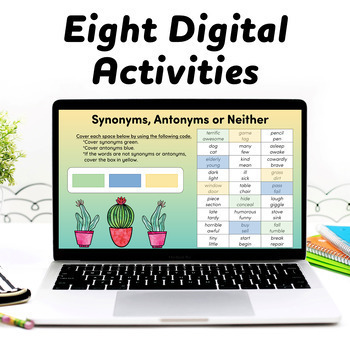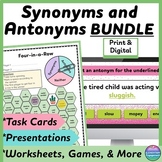Synonyms and Antonyms using Context Clues worksheets & Games in Print & Digital
- PDF
- Google Apps™

What educators are saying
Also included in
- Are you looking for ways to build your students' skills with context clues, synonyms, and antonyms? This bundle has everything from context clues lessons to synonym and antonym games. Your intermediate students will stay engaged with movement, group work, and technology as they expand their vocabuPrice $8.50Original Price $12.85Save $4.35
Description
If you are looking for no prep synonyms and antonyms worksheets and activities that use grade-appropriate vocabulary for intermediate students, this set is the perfect practice for your students. The activities are great for introducing, practicing, assessing, and reviewing synonyms & antonyms. Students will practice synonyms and antonyms in isolation and with context clues.
Because digital versions are included, you can also use this product as a way for absent students to get the practice they need, a collaborative way to work on synonyms and antonyms as a class using an interactive whiteboard, or as a way to lessen your stacks of papers by assigning it through Google Classroom.
Once your students have completed these activities, they should have a better understanding of how to use context clues. They will also have a set of easily accessible resources to help expand their written vocabulary.
What's included?
► A full-size anchor chart in both color and black & white
► A mini version of the anchor chart for Interactive Notebooks
► A foldable for Interactive Notebooks
► A list of alternative words for good, bad, said, went, happy, and sad
► Two synonym worksheets with answer keys
► Two antonym worksheets with answer keys
► Three additional activities to practice synonyms and antonyms
►Two engaging games that work great for literacy centers, partner work, small groups, or early finishers
► Six "drag and drop" activities for Google Classroom
► Two "fill in the blank" activities for Google Classroom
*Please open the preview for a detailed look at the contents.
**************************************************
Related Products
Click on the links below to find more synonym and antonym activities
★ Synonyms and Antonyms I have… Who has…?
★ Synonyms and Antonyms Print & Digital Task Cards
★ Synonyms and Antonyms PowerPoint & Google Slides Presentations
★ Synonym and Antonym Bundle (Includes this product and everything above)
→Click here to see all of my vocabulary activities.
**************************************************
Questions or Concerns?
Please visit the FAQs section, submit a help ticket, or ask a question on the Q&A tab before leaving feedback.
Thank you!

